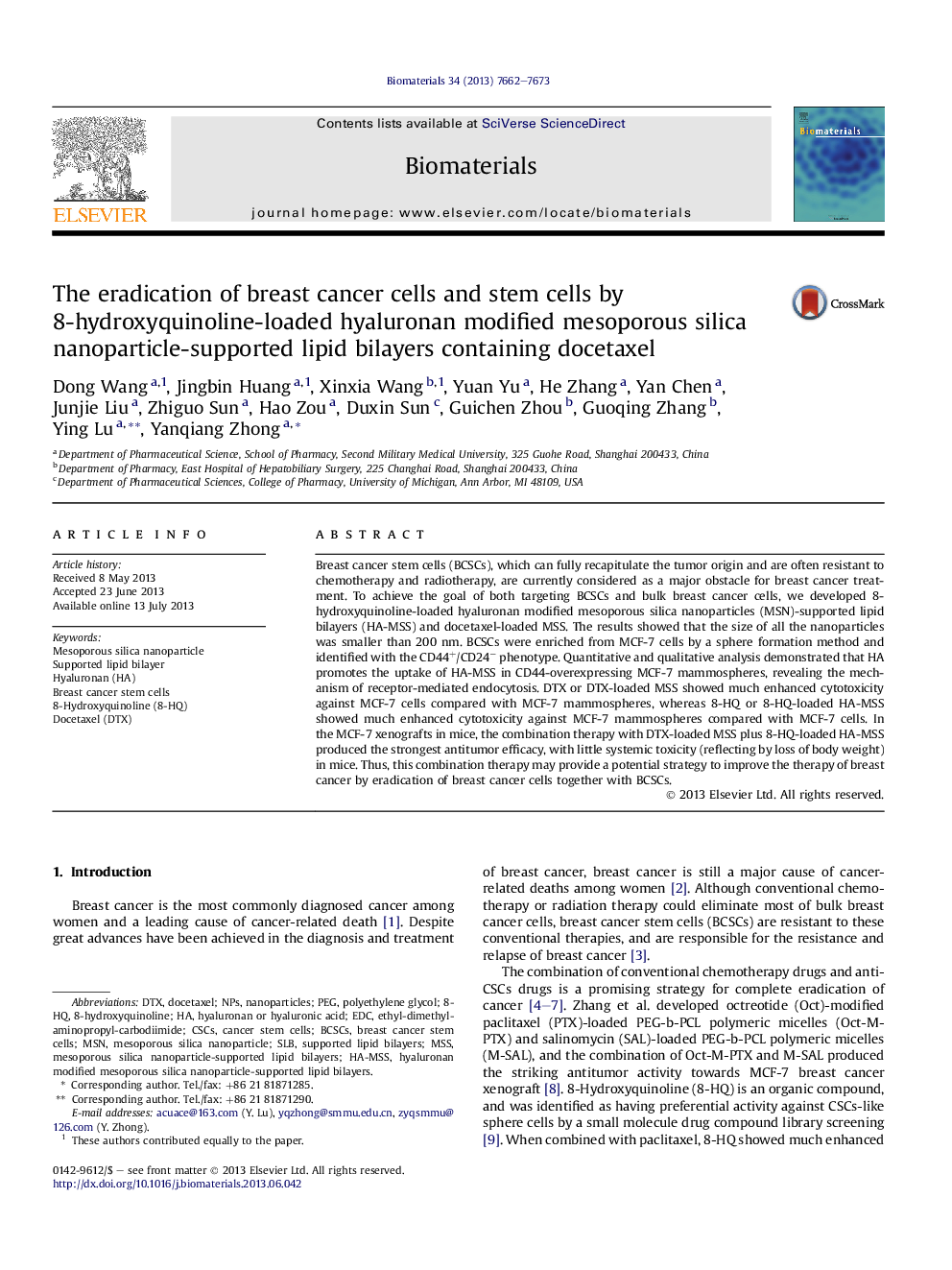| Article ID | Journal | Published Year | Pages | File Type |
|---|---|---|---|---|
| 5974 | Biomaterials | 2013 | 12 Pages |
Breast cancer stem cells (BCSCs), which can fully recapitulate the tumor origin and are often resistant to chemotherapy and radiotherapy, are currently considered as a major obstacle for breast cancer treatment. To achieve the goal of both targeting BCSCs and bulk breast cancer cells, we developed 8-hydroxyquinoline-loaded hyaluronan modified mesoporous silica nanoparticles (MSN)-supported lipid bilayers (HA-MSS) and docetaxel-loaded MSS. The results showed that the size of all the nanoparticles was smaller than 200 nm. BCSCs were enriched from MCF-7 cells by a sphere formation method and identified with the CD44+/CD24− phenotype. Quantitative and qualitative analysis demonstrated that HA promotes the uptake of HA-MSS in CD44-overexpressing MCF-7 mammospheres, revealing the mechanism of receptor-mediated endocytosis. DTX or DTX-loaded MSS showed much enhanced cytotoxicity against MCF-7 cells compared with MCF-7 mammospheres, whereas 8-HQ or 8-HQ-loaded HA-MSS showed much enhanced cytotoxicity against MCF-7 mammospheres compared with MCF-7 cells. In the MCF-7 xenografts in mice, the combination therapy with DTX-loaded MSS plus 8-HQ-loaded HA-MSS produced the strongest antitumor efficacy, with little systemic toxicity (reflecting by loss of body weight) in mice. Thus, this combination therapy may provide a potential strategy to improve the therapy of breast cancer by eradication of breast cancer cells together with BCSCs.
